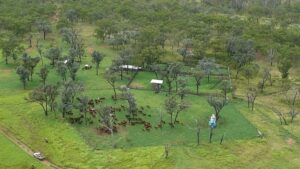Sunlight, it is said, is the best disinfectant. But despite the fact that markets can only work well when they are well informed, some in the Australian investment community remain convinced that disclosing their exposure to risky investments is a chore they would rather avoid.
Take ANZ for example.
In 2014 and 2015 motions were put to the ANZ annual meeting by the Australian Centre for Corporate Responsibility calling on the bank’s directors to better disclose the bank’s exposure to the fossil-fuel industry. While other Australian banks responded to such motions by voluntarily disclosing more information, the ANZ board dug their heals in. Where Westpac and the Commonwealth Bank now top world rankings for transparency regarding carbon risk, last week the ANZ announced an extra $100 million in write-downs due to their exposure to the risky end of the Australian resources sector. If only investors had known.
From an economic point of view, it is bizarre that calls for greater transparency regarding a bank’s exposure to the fossil-fuel industry are met with anything other than support from governments and peak bodies espousing “free market” policies. Economics 101 tells us that markets can only make efficient decisions when they have access to complete information, and hopefully, the global financial crisis taught us that all debt was not created equally.
It is not clear if some directors don’t know their company’s exposure to the risks of a decline in demand for fossil fuels or if they just don’t think they need to tell their shareholders what those risks are. It’s also not clear which mindset is worse. But regardless of what is behind the lack of disclosure, the market is beginning to interpret a lack of news about carbon risk, as bad news.
While the share prices of oil and coal companies has taken a battering in recent years, the debate about whether this decline is “structural” or “cyclical” continues. Hundreds of billions of dollars ride on the question of whether the bloodbath of the last few years represents the beginning of the end for some once blue chip shares or a once in a lifetime “buying opportunity”. Regardless of your view on what the future looks like, it is hard to fathom why all investors don’t demand that financial institutions disclose which side of the bet they are on.
LONGEVITY RISK
Even if it is hard to see coal and oil prices falling dramatically in the near future, it is easy to describe scenarios in which fossil fuel share prices continue to fall and loan defaults continue to rise. Take longevity risk for example.
In a well informed market the share price reflects the expected future dividends of a firm, adjusted for risk. While fluctuations in the market price for coal and oil are the major determinants of profit, in the short term the longevity of a commodity company is determined primarily by events outside of their own commodity market. Asbestos mines, for example, did not stop operating because of the price of asbestos, and Kodak did not go broke because of increases in the cost of making film.
The share price for a coal or oil company is a simultaneous bet on the future price of coal and oil, the future cost of producing energy from other sources including renewables, and the global regulatory environment that will govern the burning of fossil fuels. Put simply, even if the world price of coal increased, the value of shares in a coal company would still fall if countries stop renewing coal mining leases, banned the construction of new coal-fired power stations, or the cost of renewable energy fell faster than expected.
The GFC provided a clear reminder that investing in banks is not always something you can bank on. And the collapse in mining commodity prices in the last few years has reminded investors that there is no such thing as a blue chip investment. Leaving aside the moral imperative that motivates a growing number of investors to withdraw their capital from investments in fossil fuels, it is clear from an economic point of view why investors might want to separate their appetite for banking risk from their appetite for carbon risk.
Sunlight is not only the best disinfectant, many investors now believe that when combined with new battery technologies sunlight may also be the cheapest way to deliver energy to the billions of people who are not connected to the expensive grids that coal-fired power stations require. If the banks want to bet against them, then they should have no problem disclosing how much of others people’s money they are willing to gamble.
Richard Denniss is the chief economist for The Australia Institute @RDNS_TAI
First published on the Australian Financial Review – here.
Between the Lines Newsletter
The biggest stories and the best analysis from the team at the Australia Institute, delivered to your inbox every fortnight.
You might also like
Here are 23 Times Carbon Offsets Were Found to be Dodgy
Carbon offsetting has received a lot of attention recently. As businesses and governments look to meet their climate targets, many are turning to carbon offsets. That is, they are paying someone else to reduce or avoid putting greenhouse gases into the atmosphere, so they don’t have to.
The carbon con killing koalas
The NSW Labor Government took office promising to create a vast koala sanctuary on the state’s mid-north coast – the Great Koala National Park. Despite the threat of koala extinction in the state, more than a year later the Great Koala National Park is yet to be established.
Conflict of Interest Concerns Spread to Climate Authority after PwC Scandal
The Minister for Climate Change and Energy has been urged to review potential conflicts of interests at Australia’s key climate change agency in light of the integrity scandal at PwC and the consulting services sector.


